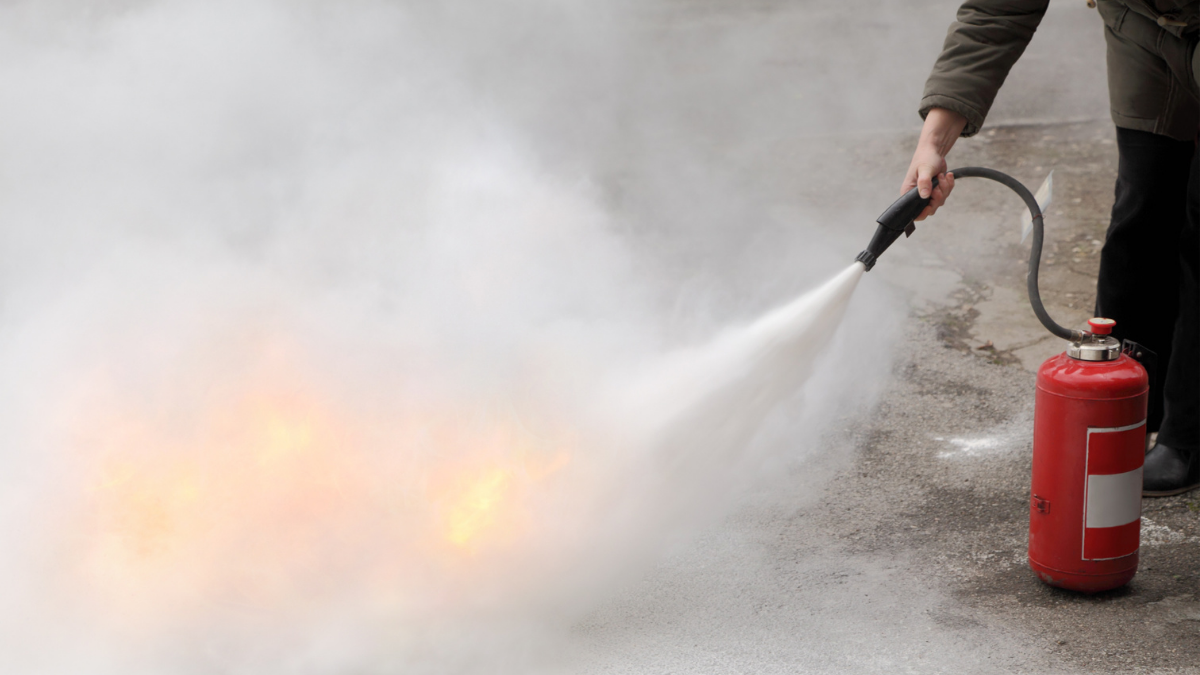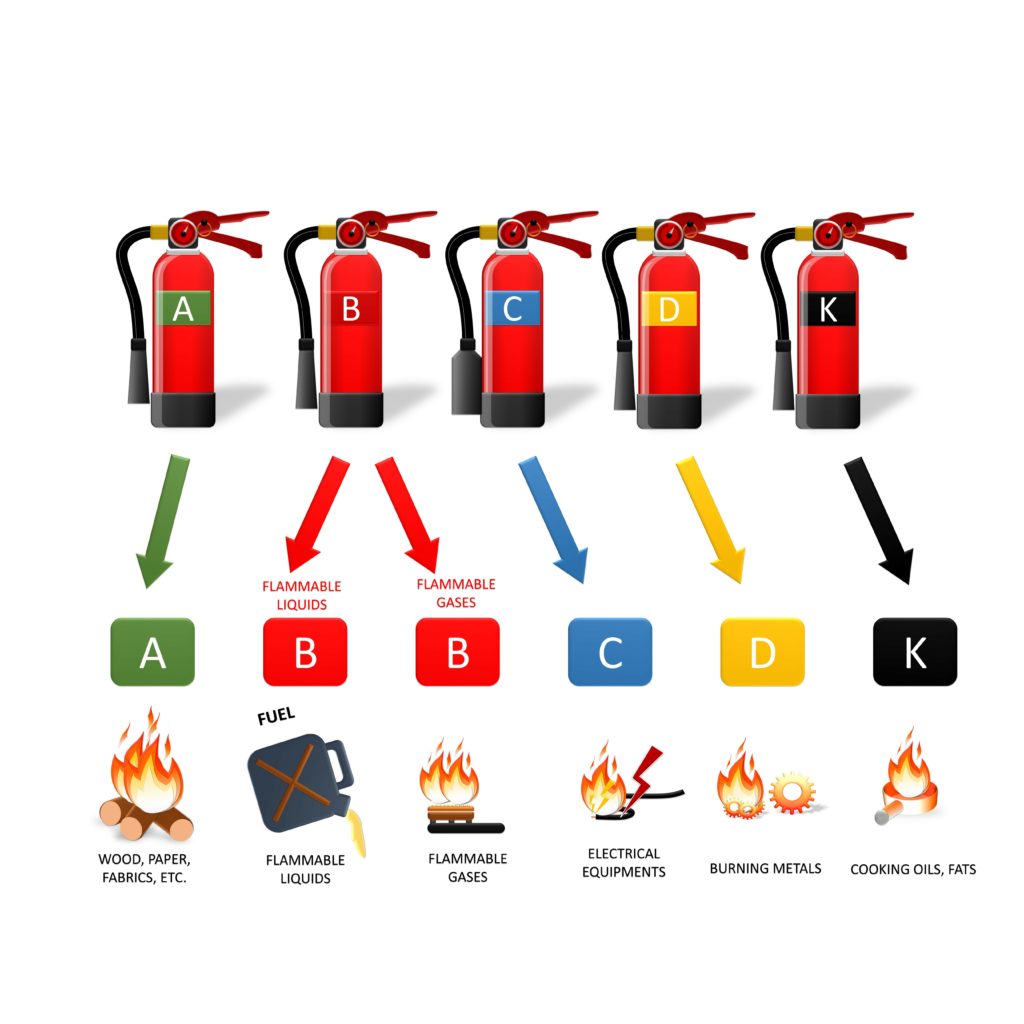
Awareness & Responsibility
Fire is a devastating occurrence for life and property. Two of the things that security personnel are charged with protecting. Awareness of fire risk and the actions to take are the responsibility of each security operator. The 6-day training course for your SIA door supervisors licence will involve fire awareness training.
Your responsibility is to maintain that awareness and training. This will enable you to act calmly and efficiently in the event of a fire.
Reasons For Being Trained In Fire Safety
It is not just the flames that are dangerous in a fire.
✅ Smoke inhalation is the most common cause of death in a fire.
✅ Becoming overcome by the heat.
✅ Lack of oxygen as the fire burns up all the oxygen present.
✅ Risk of physical injury as fire-damaged structure starts to fall.
✅ Not having an escape route due to it being blocked or not able to open an exit.
Understanding Fire
Fire is where fuel + oxygen + heat combines, creating a fire triangle. Remove one of the elements, and you won’t have a fire. The same goes for a fire tetrahedron, where you have a fourth element of chemical reactions. By removing one of the elements, you will put out the fire. Fire extinguishers play an essential role in removing a component to control fire.
Fire Prevention
It is imperative you learn the simple measures you can take in preventing fires on your watch. Things like
✅ Making sure fire exits are clear and can easily be accessed.
✅ Keeping the workplace tidy – or taking note when it isn’t and inform the relevant manager.
✅ Effective management of waste – know what is flammable
✅ Knowing how to reduce the risk of electrical fires occurring.
Know the place you are working. Know where the fire exits are and how they open. Be aware if staff or customers don’t respect the need to keep them clear of obstruction.
Be alert for telltale signs of a fire:
✅ Smell
✅ Noise
✅ Smoke
✅ Flames
Learn the location of fire alarms and fire extinguishers. Ensure that exit signs are visible, Be aware of any other fire precautions in a building like water sprinklers and fire hoses.
Fire Extinguishers & Their Uses

Six Categories Of Fire
Class A fires – fueled by combustible materials—including wood, paper, and textiles
Class B fires – fueled by flammable liquids—such as paint, petrol or spirits
Class C fires – fueled by combustible gases—including propane and butane
Class D fires – fueled by volatile metals—chemicals such as potassium, magnesium or lithium
Electrical fires – fueled by electrical equipment—computers and photocopiers etc. Removing the electrical component changes the fire’s class.
Class F fires – fueled by cooking oils—chip-pan fire or olive oil or butter.
It is crucial to have the correct extinguisher for the area. Fire extinguishers are designed to tackle particular fuels.
Fire Extinguishers – Water
One of the most common fire extinguishers, these release water under high pressure. They are for Class A fires.
Do not use a water fire extinguisher for
✅ Kitchen fires
✅ Fires involving electronic equipment
✅ Fires caused by flammable liquids or gas.
Fire Extinguishers – Foam
These extinguishers are for Class B and Class A fires. The foam creates a barrier between the fuel and the oxygen.
Do not use a foam fire extinguisher for
✅ Kitchen fires
✅ Fires involving electronic equipment
✅ Fires caused by flammable liquids or gas.
Fire Extinguishers – Dry Powder
These extinguishers are for Class A, B & C fires and fires that involve electrical equipment up to 1,000v. There are also specialist dry powder extinguishers for flammable metal fires, like titanium. It would be best to avoid using dry powder extinguishers in an enclosed space to prevent inhaling the powder.
Do not use a dry powder fire extinguisher for
✅ Fires involving electronic equipment over 1000v
✅ Kitchen fires involving cooking oil
✅ Fires raging in enclosed spaces.
Fire Extinguishers – Carbon Dioxide ( CO2)
These extinguishers are the primary option for electrical fires and Class B fires. They are found mainly in business with a high electrical equipment component like server rooms and tech stores—these work by suffocating the fire, removing the oxygen element, which lets the fire die out.
Do not use a CO2 fire extinguisher for
✅ Fires involving flammable metals
✅ Kitchen fires
✅ Fires involving materials like paper or textiles.
Fire Extinguishers – Wet Chemical
These extinguishers are for Class F fires, with cooking oil, so found in places with kitchens, restaurants, hotels, cafes, chippies, etc. These are also usable for Class A fires—but a foam or water extinguisher would be a better option. They work by starving the fuel of oxygen by creating a foam layer on top of the burning oil. The fine mist it produces when activated is potassium. Potassium reacts to the oil, making a foamy or soapy film. This also acts as a coolant.
Do not use a CO2 fire extinguisher for
✅ Fires involving flammable liquids or gasses
✅ Electrical fires
✅ Fires involving flammable metals
A risk assessment will decide which extinguishers are necessary for a building and where. As a licensed security officer, it is your responsibility to familiarise yourself with where they are —the same goes for fire hoses—and how to operate them.
Like with all aspects of security work, you need to stay sharp and stay calm. Implement the emergency procedures for the building you are in. If there are no such procedures, then be proactive and ask what your role would be in the event of a fire.
Add Skills With SIA Training Courses
Security personnel are often the first to detect a fire, so you need to have the knowledge to react quickly and confidently. The Door Supervisor training courses you can book via Get Licensed will help you achieve a level of knowledge about fire, its behaviour, and hazards. More importantly, what you can do in fire prevention and in case of a fire.
Got more questions about the training available to become an SIA licence holder? Take a look at our FAQs here.
Looking for jobs?
To find the latest security jobs, check out our Jobs Board, which has 1,000+ jobs from the UK’s best security companies.
If you’re on the hunt for a security job on the go, download the GuardPass app for all the latest jobs and more. The GuardPass App is available for download on the Apple App Store or on the Google Play Store.
The UK’s number 1 course finder
Best price guarantee
We offer price match if you find the same course cheaper elsewhere
100% money back guarantee
Get a full refund if you don’t like the course. Terms apply.
5-star customer support
Consistently rated 5-stars on review sites like Trustpilot
£0 booking fee
We never charge any booking or hidden fees
Instant eLearning access
Get FREE access to eLearning course materials instantly after you book
Top-rated training providers
Over 90% of our customers pass the exam in the first attempt

 Trustpilot
Trustpilot









